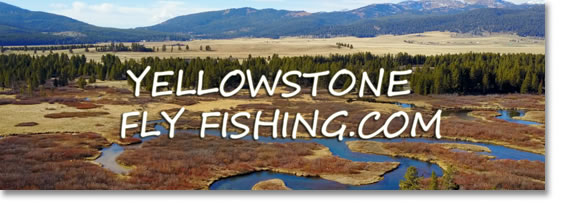 |
|
|
Echo Dry Fly Rod Review Gone are the days where it was all about numbers. Blind casting and hanging nymphs just don't do anything for me anymore. I would rather throw a stick for my dogs, then clean up their shit. I find that there’s more satisfaction in acquiring a certain Skillset rather than occupying space. I would like to think it’s an age thing but when I see anglers much older than me still bobbering away, I have thought “they're just having a good time and occupying space”.
Echo Dry Fly Rod Review from Yellowstone Media on Vimeo. The flex or action of a medium-fast action fly rod varies with all manufacturers. A Sage medium-fast is not the same as a Winston medium-fast. The Echo Dry is similar, in action, to the Winston BIIx fly rod. I’ve always enjoyed casting a medium-fast action fly rod. They’re much more versatile than either a medium or fast action rod. It's been my experience that every fly rod has its sweet spot. This is the optimum range where it is effortless to cast and most important, accurate with a minimal amount of false casts. A medium fast action rod has a wider sweet spot or margin for error until you extend the distance. Then the exact opposite seems to take effect. As I aerialize enough line to hit my 70’ mark and beyond, my timing and technique becomes more critical and a smooth acceleration must be more precise than it would with a fast action rod. It’s easy to over power and create a tailing loop with a medium-fast action over a fast action rod. These may be some of the reasons why fast action rods have become, to their detriment, the rod of choice for so many novices. Bobber fishing, with plastic, yarn or dry fly indicator, and a fast action rod seems to be the route novices learn how to fly fish.
Last winter I demoed a new rod from Bucky at Blue Ribbon Flies. The Echo Dry 9’-4wt. I gave it the single stroke flex and response test in the shop and was pleasantly surprised. It was worth further evaluation. My criteria are simple. Will it comfortably cast with accuracy from 25’ to 85’. No tip casting, no herky-jerky double hauling, and no over lining. A 4 wt line is extremely susceptible to the slightest breeze. The key is positioning whether it be on foot or on a boat. If winds are over 5 mph, the midge or mayfly hatch is over anyways. By late April, the Echo Dry passed the river test. In fact, I was just finishing my latest video project “Fly Fishing the Midge” and used the Echo Dry for most of the late winter, early spring footage. I caught over 100 Madison River midge feeding trout, all on midge dry flies, with this rod at ranges from 20’ to 45’. In early May, the lake was still frozen. So I borrowed my dogs 8 ½” frisbees and placed them randomly from 25’ to 85’ and allowed myself no more than 3 false casts, preferably 2, per target. This scenario represents actual target distances I would most likely encounter on Hebgen with one exception, the fish are moving. The short range targets represent river feeders so again I allow myself 2 false casts. I was pleasantly surprised to hit my marks especially when a little breeze popped up. When it was windy, I could increase my casual stroke for more line speed and still hit my target. With my softer rods, I would have 3 choices. Move my casting position (no challenge there), switch to a 5 wt or quit fishing. Like most medium-fast and fast action rods, casting 30’ or less is the weak point. I find “flicking” or tip-casting to moving targets, annoying. Most of my dry fly fishing is in the 40’ - 70’ range and I must know exactly where my dry fly is going to land. Like pro golfers or tennis players (carbon fiber sports), it becomes a personal ‘feel” and comfort thing. Everyone is different.
|